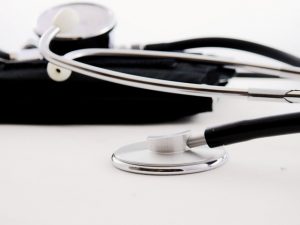One of the most popular residency specialty areas for foreign medical graduates is family medicine. According to data from the National Residency Match Program (NMRP), about 16.6% of foreign-trained physicians who were matched in the United States in 2015 had chosen family medicine as their specialty area. Although this figure is down slightly from 18.8% in 2011, family medicine has long been a mainstay specialty area for foreign medical graduates, and there are lots of opportunities in the field. Based on data provided by the American Association of Family Medicine (AAFP), about one out of every five medical office visits in the United States is with a family doctor, accounting for a total of 192 million annual visits.
About Family Medicine
As a physician focusing on family medicine, you would have the chance to work with patients of all ages and provide care for lots of different kinds of illnesses and injuries. Family doctors provide care for infants, children, adolescents, adults, and seniors. Often, they provide ongoing care for families, so they have the chance to develop strong relationships with their patients, watching kids grow up and helping adults maintain their health as they get older. They provide regular checkups, help with the management of chronic illnesses, diagnose illness and injuries, and provide referrals to specialists, among many other possible tasks.
If you are planning to pursue a career in family medicine in the United States after you finish your residency, the best job outlook is in rural areas and urban areas that are currently underserved. As a family doctor in one of these settings, you would have the opportunity to provide essential medical services to patient populations that badly need the help, so a career in family medicine is a great option for foreign medical graduates who want to make a difference in the world.
Family Medicine Residency Programs
Family medicine residency programs in the United States last for three years. Over the course of the training, you would gain experience in six major medical subfields:
- Pediatrics
- Obstetrics and gynecology
- Internal medicine
- Psychiatry and neurology
- Surgery
- Community medicine
You might also gain experience in other areas that can be helpful in a career as a family doctor, including geriatrics, ophthalmology, radiology, emergency medicine, otolaryngology, and urology. With this broad experience, you will emerge from a residency program with the knowledge you need to provide the wide-ranging services required of family doctors.
Clinical Externships in Family Medicine
One way to get ready for a residency program in family medicine in the United States is to complete a clinical externship in the field. In one of these programs, you will have the opportunity to gain real-world experience in an American medical setting, working under the supervision of experience. Not only will you gain essential skills in the field, but you will also improve your application profile, and you may be able to get letters of recommendation from the physicians that you work with.
FMG Portal facilitates clinical externships in family medicine for foreign medical graduates, along with a wide range of other services. If you need help finding and getting matched to a family medicine residency program, contact us today!




